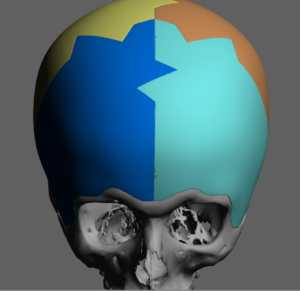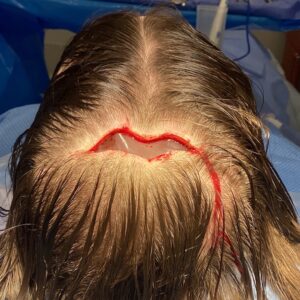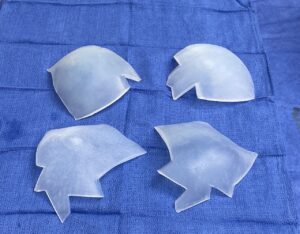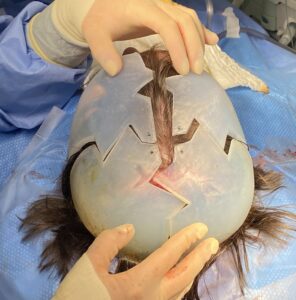Background: Enlargement of the skull or head shape is most commonly done for select areas using a custom skull implant made from the patient’s 3D CT scan. Such subtotal skull augmentations can usually be done with immediate insertion due to the natural stretch of the scalp. But in larger custom skull implants, whether it is a select skull implant that has a large volume due to its projection or a skull implant that has a large surface area of coverage (near total or total skull augmentation) the stretch of the scalp will be inadequate to contain it and get a competent scalp incision closure over it.
As a result large custom skull implants (those that exceed 150 to 175ccs in volume for most patients) requires a two stage process with a first stage scalp expansion. By placing an initial scalp expander it can be slowly inflated to reach the design volume of the implant. This is an important distinction from how scalp tissue expanders have been historically used in scalp reconstruction where their use is very visible and temporarily aesthetically deforming. Conversely the scalp expander for skull implants, since it matches the designed implant volume, is not as visible or aesthetically deforming.
Besides requiring enough scalp tissue to cover it large custom skull implants have another need…how to get such a large implant through a scalp incision as small as possible. While a larger scalp incision, like a coronal type, can always be used the goal is to avoid a long scalp scar. To do so require an innovation in the implant design.
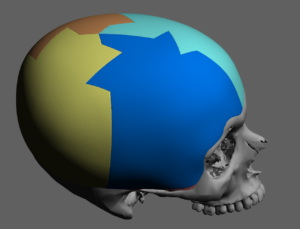





Case Highlights:
1) Large custom skull implants will require a first stage tissue expansion if the volume exceeds the stretch capabilities of the scalp.
2) The interval between scalp tissue expander insertion and the placement of the skull implant is usually 2 to 3 months.
3) To keep the scalp incision small a segmentalized approach two the design and placement of the custom skull implant is used.
Dr. Barry Eppley
World-Renowned Plastic Surgeon




